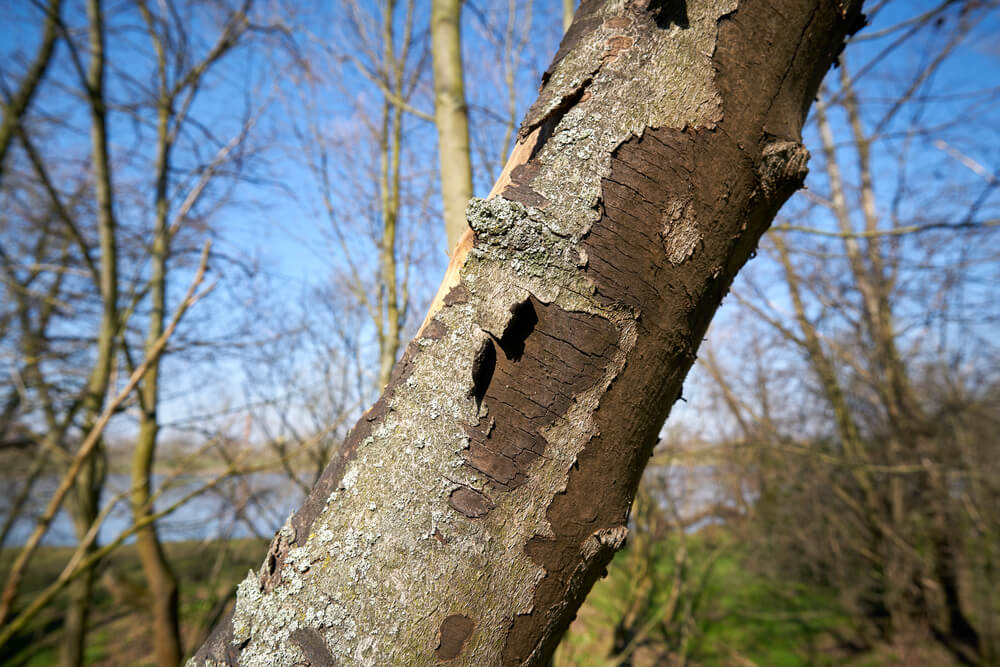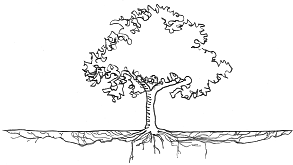
Seattle street trees are dying from sooty bark disease, spurred by heat and drought. Water your trees during hot, dry weather to help them resist diseases and pests.
With the prolonged drought this spring, and the recent record heat wave, your trees are likely suffering from drought stress. This makes them more prone to diseases and pests. You need to water your trees during hot, dry weather to keep them healthy and improve their resistance to insects and diseases.
Over the last several years, the region has experienced longer and hotter droughts, with harmful effects on trees. Here is a recent Seattle Times headline: “Newly discovered fungus spores spurred by heat and drought are killing Seattle street trees.”
Sooty bark disease has damaged or killed 46 Seattle street trees since it was discovered in 2020. According to the Seattle Times, “Seattle Parks has recovered samples of the fungus from unhealthy living trees throughout the metro area and confirmed that sycamore maple, big leaf maple, Japanese maple, Norway maple, Pacific dogwood and horse chestnut are all at risk.”
There is no known treatment for stricken trees. The disease is also hazardous to people under prolonged contact with infected wood.
Problems with insects are also related to drought stress. When plants begin to have water stress issues, they often emit destress signals that many damaging insects pick up on. Infestations of aphids, spider mites and lace bugs are all directly related to whether the plant has the moisture it needs to survive and thrive.
How to water your trees
If you are going to water your trees or other plants, do it correctly. You need to maximize the water penetration in the soil and minimize the amount of evaporation. Evaporation wastes water; it cannot get into the soil and help the tree.

A tree’s roots are relatively shallow (three feet or less deep), and most roots are within 12 inches of the surface. Roots extend well past the canopy drip line. Illustration: University of Minnesota Extension.
Water the entire root zone area, and then let it partially dry out.
This may take a bit of thinking, because the active root zone for most plants is at the outer tips of the leaves and beyond. For many trees this can be a large area.
It will not help the tree if you water nearer the trunk. No root tips are there bringing in moisture for the plant. So make sure you water the entire root zone area of the plant
Then allow the area to dry out partially. No roots want to be waterlogged all the time, except for rice. Unless you are trying to grow rice, the roots need oxygen. This happens when the soil is allowed to dry out some between waterings.
Water slowly and deeply for healthy plants.
If your soil is already dry, it may take a few waterings to “soften” up the top of the soil layer, allowing water to penetrate deeper into the soil profile.
Soil is like a sponge. If a sponge is allowed to dry out completely, you cannot just pour water quickly onto its top. The water will run off and not penetrate at all. But if you slowly pour the water on the sponge and allow it to soften up the surface, then the additional water will freely percolate through the rest of the sponge.
Water when it is cool.
If you water in the heat of the day, most of the water will evaporate into the air before it has a chance to get to the soil. Mornings are the best time to water, with evening the second choice. Be aware that if you regularly water in the evening, it can promote some diseases.
How to water newly planted trees
If you planted any trees this year, or within the last two years, a watering bag is a convenient way to water your trees slowly and deeply. Watch our video for details.
If you follow these simple tips, your trees will get the water they need to thrive. You will help the urban forest stay healthy. And you can sleep well, knowing you are doing your part to keep our trees happy, healthy and growing for the next generation.

Trackbacks/Pingbacks